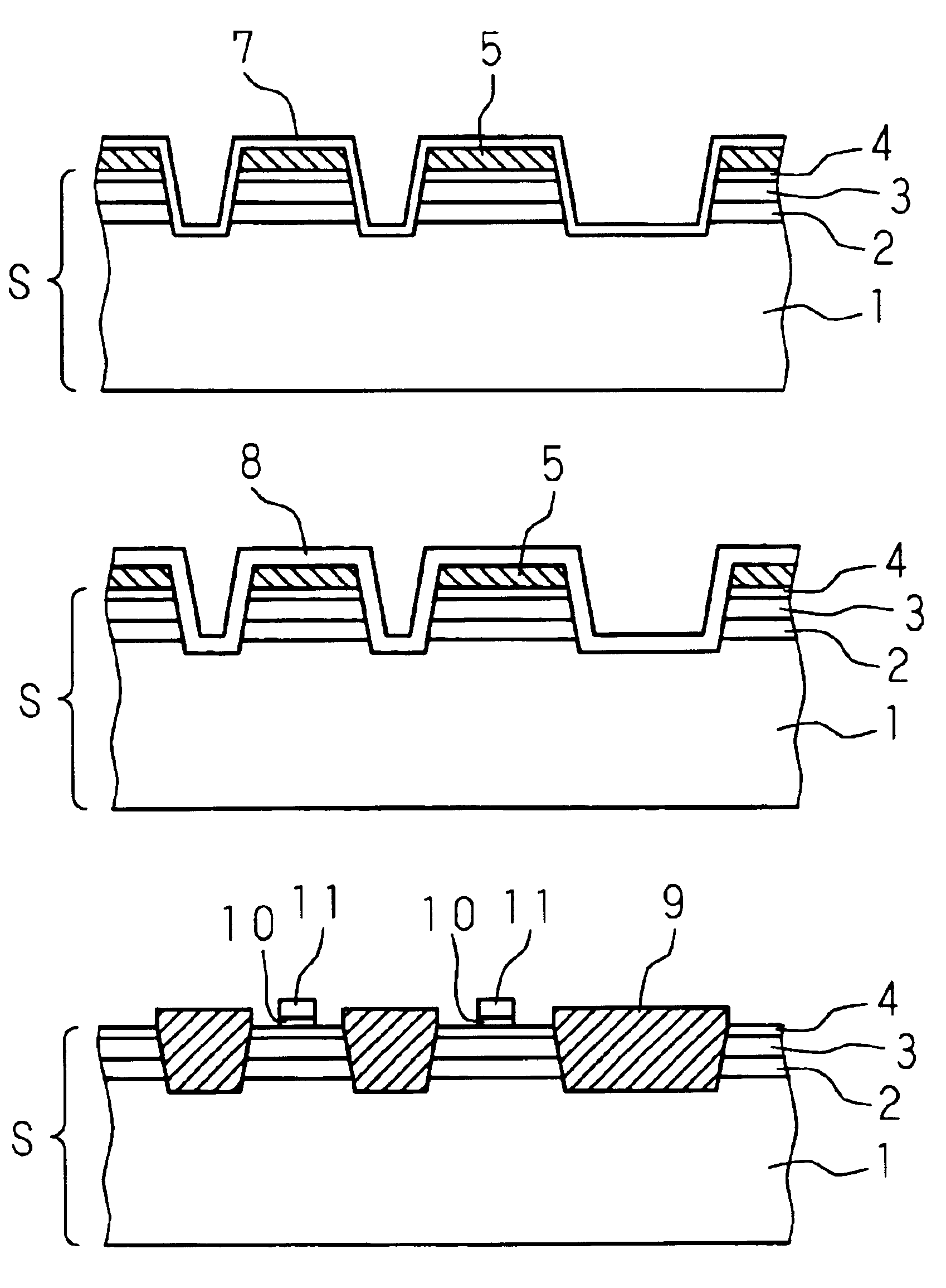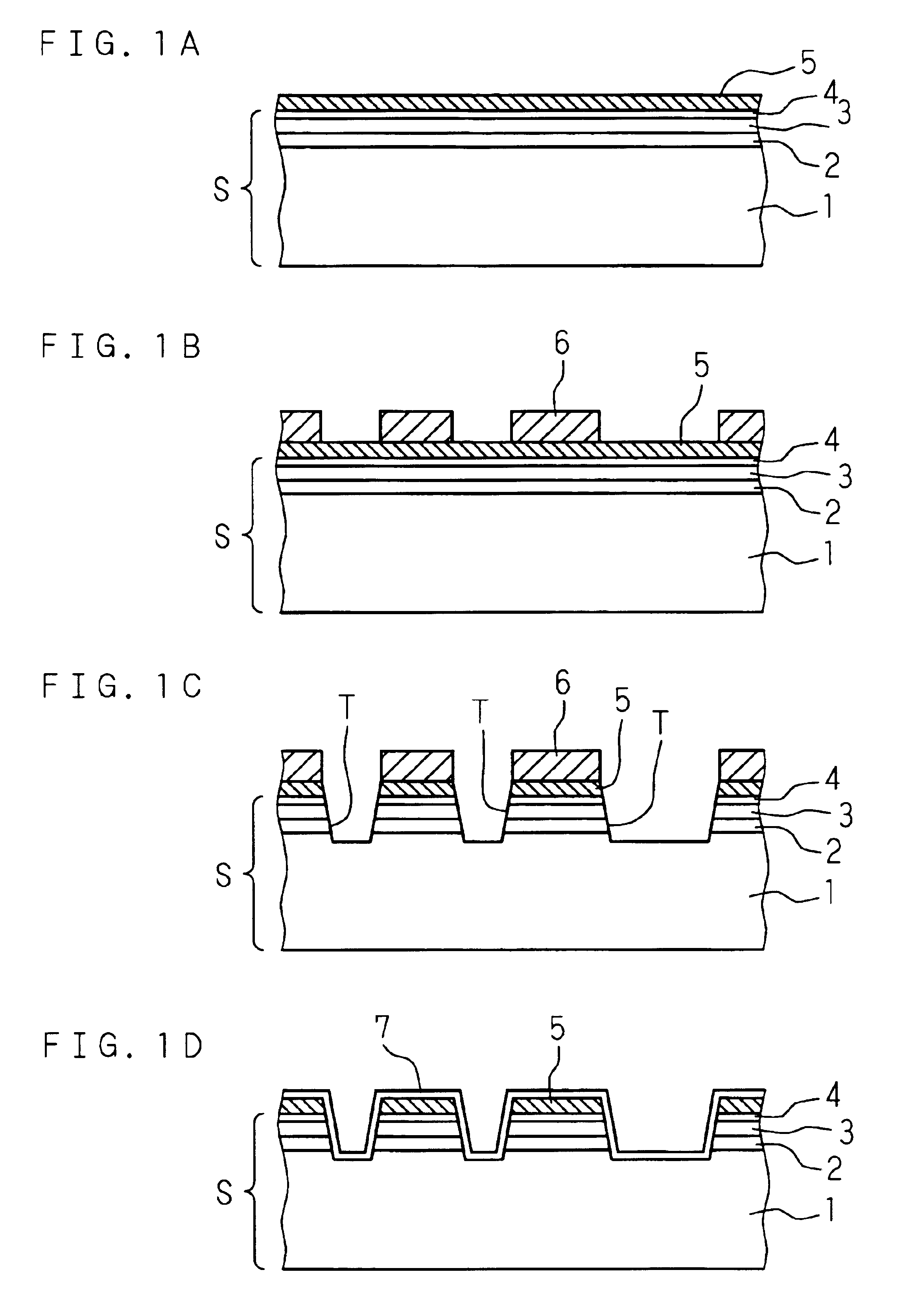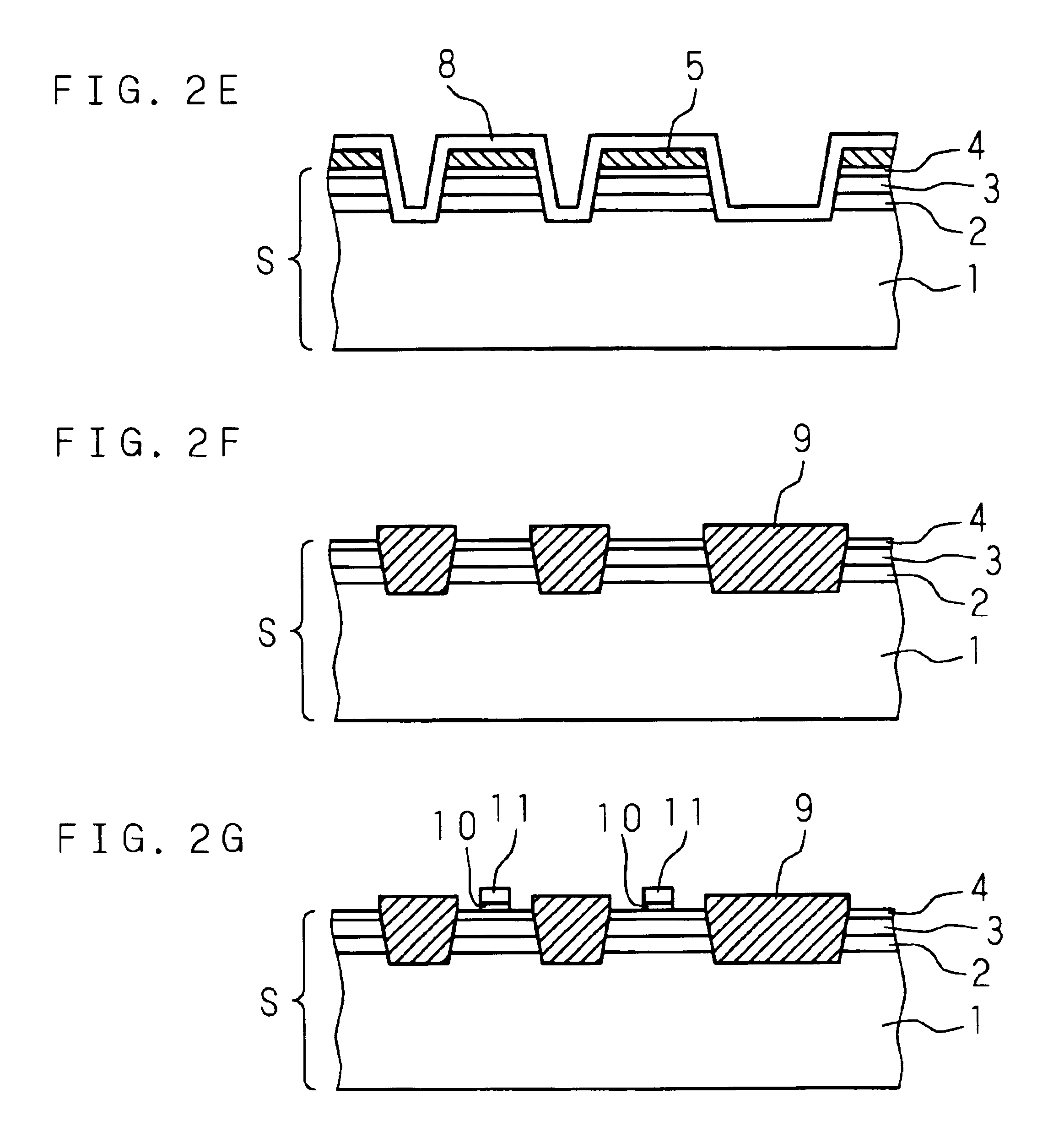Method of semiconductor device fabrication
a semiconductor device and fabrication method technology, applied in semiconductor/solid-state device manufacturing, basic electric elements, electric devices, etc., can solve the problems of increased leak current, non-uniform formation of oxide films, increased leak current, etc., and achieve high electrical reliability
- Summary
- Abstract
- Description
- Claims
- Application Information
AI Technical Summary
Benefits of technology
Problems solved by technology
Method used
Image
Examples
Embodiment Construction
[0022]The present invention is described below with reference to the drawings illustrating the embodiments. An example of embodiment of fabricating a pair of CMOS transistors by the following processes is described below with reference to the schematic diagrams of FIGS. 1A-2G.
[0023]As a preprocess, a p-type (100) silicon substrate 1 is treated by high-temperature sulfuric acid cleaning and RCA cleaning. Then, the natural oxide film on the silicon substrate 1 is removed with 5% diluted hydrofluoric acid. Then, a silicon germanium layer 2 having a germanium concentration of 30% and a thickness of 150 nm is formed on the silicon substrate 1 by epitaxial growth at 500° C. using germanium hydride (GeH.sub.4) and silicon hydride (SiH.sub.4) in a low-pressure chemical vapor deposition (LP-CVD) system. After that, hydrogen ions are implanted into the semiconductor substrate composed of the silicon substrate 1 and the silicon germanium layer 2 under the conditions of implantation energy of 1...
PUM
 Login to View More
Login to View More Abstract
Description
Claims
Application Information
 Login to View More
Login to View More - R&D
- Intellectual Property
- Life Sciences
- Materials
- Tech Scout
- Unparalleled Data Quality
- Higher Quality Content
- 60% Fewer Hallucinations
Browse by: Latest US Patents, China's latest patents, Technical Efficacy Thesaurus, Application Domain, Technology Topic, Popular Technical Reports.
© 2025 PatSnap. All rights reserved.Legal|Privacy policy|Modern Slavery Act Transparency Statement|Sitemap|About US| Contact US: help@patsnap.com



